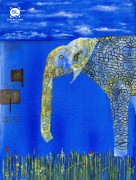I’ll be honest, as a person who finds comfort in objects, “What I Wore” hit close to home. I especially loved your decision to utilize cataloging as the driving narrative structure. It is an exceptionally perfect choice for this narrative. Is structure (or playing with structure) a strong interest of yours, and if so how did you come to it?
I’m fascinated by all the different ways there are to tell the same story. And the structure helps shape so many elements: character, voice, plot. I began seriously playing with structure when I noticed it was generative for me; certain kinds of structures gave me new ideas or made my writing more compelling. The Barbie piece, for example, started out as a conventional narrative in a humorous—sometimes mocking—voice. But when I decided to use cataloguing it conjured a lot of images and backstory, and the voice was altered dramatically.
I love your decision to set a story in the Barbie Dream World, and I recognized some of those outfits. Did you play with or collect Barbies? What’s your relationship with the toys?
My sisters and I had lots of Barbies and delighted in their clothes and tiny accessories: sparkly sunglasses, pearls, wedge heels. I saw my mother as a kind of Barbie: tiny waist even after six children, long, slim legs, perfect make-up, a closet filled with fashionable clothes which she generously let us play with. We’d dress up in Mom’s silky nightgowns, her paisley dresses and vinyl boots, trying to match Barbie’s outfits. My mother had major mental health issues. I suspect my obsession with dolls was a way of creating an alternate world where Barbie did everything calmly and cheerfully. I remember how happy I was when I had Barbie prepare a huge Thanksgiving dinner on a day that I imagined filled with thunder and lightning and power outages—and Barbie pulled it off seamlessly. But as a teen, I saw Barbie as a trap, defining female lives in narrow, superficial ways. I did not save my Barbies. And through the process of writing this piece, I developed great compassion for this character as I probed the ways that the life I gave her mirrored so many ways girls’ and women’s lives have been restricted by convention.
So many of the images here resonate vividly. I am especially haunted by the image in the boy’s paintings, the “birds who flew kites shaped like people.” Can you talk a little bit about this image and its place in this story?
I wanted Barbie to be attracted to this boy because his paintings touched some quirky, creative parts of her which she hid. I also wanted to convey a fresh image about flight. And finally, it was a nod to my mother, a wonderful artist whose surrealism I’m especially fond of. After she had a serious injury with pruning shears, she painted a piece with those tools turning into birds.
This piece says so much about womanhood to me. It feels like a time capsule of many of our lives, our whole lives, and so quickly. What is it about flash that makes it a good fit for this sort of span and reach?
A preoccupation with every single word ironically frees me to think expansively about characters and their lives. Much of what we write in early drafts is filler, necessary to discover the heart of a piece. But flash won’t tolerate filler—and it gets some of its power from the absence of information.
Do you collect anything?
No, although I’m fascinated by people who do, especially by the line between collecting and hoarding behavior. But my daughter will tell you I have way too many earrings!



 The core workshop of SmokeLong Fitness is all in writing, so you can take part from anywhere at anytime. We are excited about creating a supportive, consistent and structured environment for flash writers to work on their craft in a community. We are thrilled and proud to say that our workshop participants have won, placed, or been listed in every major flash competition. Community works.
The core workshop of SmokeLong Fitness is all in writing, so you can take part from anywhere at anytime. We are excited about creating a supportive, consistent and structured environment for flash writers to work on their craft in a community. We are thrilled and proud to say that our workshop participants have won, placed, or been listed in every major flash competition. Community works.